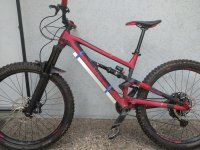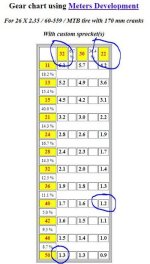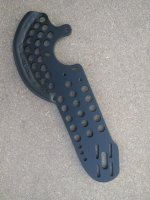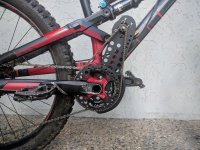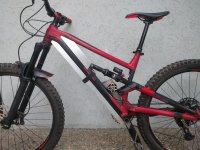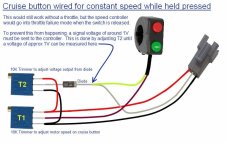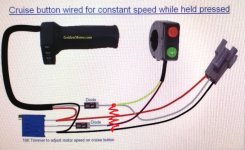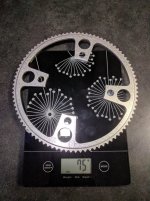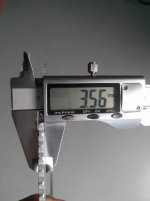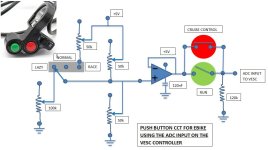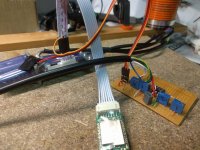Thanks for your post. Lots of good information here! I have started to add it into my Excel motor sheet.thepronghorn said:FZBob, I really like this very simple and clean design. I have been following closely and am thinking about making my own. I also wanted to offer some technical equations for torque and phase amps that could maybe inform some of your motor, current limit, and battery choices.
...
Perhaps you can use some of the above math to help explain why different motors feel different from each other. I would be interested in what you are trying to optimize when you play with VESC current limits as well as what low and high rpm mean when you are reading your watt meter.
Since you have plenty of voltage headroom on your VESC but are butting up against the current limits, lowering Kv will help to move the volts/amps combination away from the current limit.
My "Low RPM" is about 40, and "High RPM" is around 100-110. I'm estimating, as it has been decades since I've had a cadence meter on a bike, but I'm probably within +/-15%.
I've been setting up the VESC current limits as follows. (Note: I'm not an electric motor expert!) I set the Battery Amps to what is listed on the motor spec. Then I increase the Motor Current Limit (Phase Amps) until I see cogging at low RPM and full load/power, and back off about 5%. I have never seen peak amps on my wattmeter come close to the battery current limit I set, so I don't worry about that parameter. I'm not sure if I'm setting the Motor Current correctly, but it seems to work for me. Since I rarely use over 200-250 watts for more than a few seconds, I may be operating in a very forgiving fashion.
(By the way, just to keep the record straight, I'm using 53 Amp phase current on the orange (D5035) motor.)
So if I was to switch from my 125Kv motor to a 100Kv motor, would you expect a need to change from 4S to 5S ? When I tried a 60Kv motor, it needed 8S...
One thing which has puzzled me for a while. At "Mid RPM", (say about 60 RPM), and even "Low RPM", if I hammer the throttle I see Watts and Amps on my Turnigy wattmeter much higher than expected/predicted. Almost as high as at High RPM, over 400 watts. If Torque is more or less constant over RPM, and I believe it is, I would expect power to be proportional to RPM, and therefore the wattmeter should not show a lot of watts at low and mid rpm. Where is the extra power going? I'm guessing heat?





